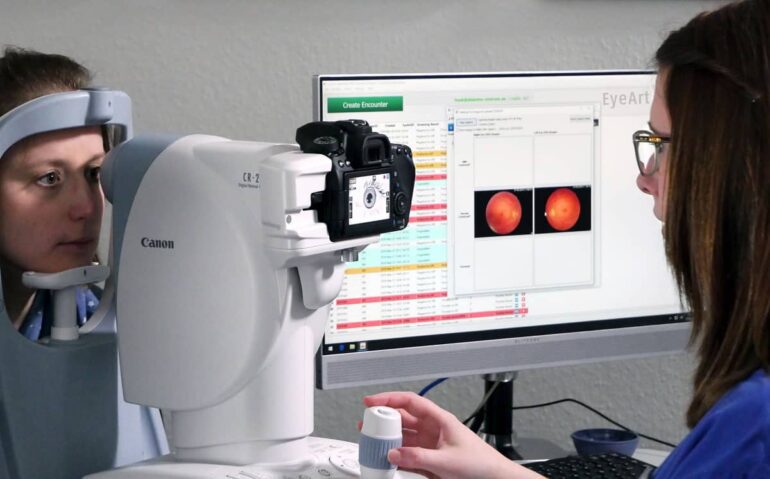TL;DR:
- A recent study in JAMA Ophthalmology highlights the efficacy of automated machine-learning models in predicting diabetic retinopathy (DR) progression.
- Led by Dr. Paolo S. Silva, the study showcases the accuracy of these models in analyzing ultra-widefield retinal images.
- Results indicate significant success rates in identifying DR progression, with precision-recall curves serving as key metrics.
- The validation phase demonstrates promising outcomes, with high rates of detection for both mild and moderate NPDR progression within specified timeframes.
Main AI News:
Automated machine-learning solutions prove pivotal in predicting diabetic retinopathy advancement. Cutting-edge automated machine-learning systems have demonstrated remarkable accuracy in assessing the risk of diabetic retinopathy progression through the analysis of ultra-widefield retinal images, as revealed in a recent study featured in JAMA Ophthalmology.
Dr. Paolo S. Silva, leading the study from the Beetham Eye Institute at Joslin Diabetes Center, and his team emphasized the significance of estimating the likelihood of diabetic retinopathy (DR) progression, citing it as a daunting yet crucial task for clinicians attending to individuals with diabetic eye ailments.
The study, a comprehensive investigation into the efficacy of automated machine-learning models in forecasting DR progression, encompassed 1,179 deidentified ultra-widefield retinal images captured utilizing the California retinal imager (Optos). Notably, 32.2% of the images depicted mild nonproliferative DR (NPDR), while 67.8% exhibited moderate NPDR.
Results unveiled that half of the training set manifested DR progression. Leveraging the area under the precision-recall curve (AUPRC) as a metric for model precision, researchers disclosed an AUPRC of 0.717 for mild NPDR, boasting a precision and recall rate of 53.16% and an AUPRC of 0.863 for moderate NPDR, accompanied by a precision and recall rate of 75%.
In the validation phase, the model aptly identified 77.5% of eyes with mild NPDR and 85.4% of those with moderate NPDR that progressed by at least two stages. Furthermore, the model effectively flagged all instances of mild NPDR and 85% of moderate NPDR cases that advanced within a year.
Dr. Silva and his colleagues underscored the necessity for prospective validation and regulatory endorsement before integrating these AI models into clinical practice. Nonetheless, they highlighted the burgeoning accessibility of machine-learning applications in addressing unmet clinical demands, potentially enhancing screening protocols and vision outcomes for diabetes patients.
Conclusion:
The advancement of automated machine learning models for diabetic retinopathy prediction signals a promising shift in clinical practice. With increased accuracy in identifying DR progression, these technologies have the potential to enhance screening protocols and improve vision outcomes for patients with diabetes, thereby addressing unmet clinical needs and reshaping the landscape of diabetic eye care.

